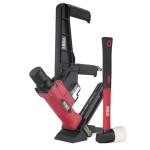Rock Solid Flooring Systems: An Examination of Durability and Performance
Flooring is a critical element in any building, residential or commercial. It affects aesthetics, safety, and overall structural integrity. Choosing the right flooring system requires careful consideration of factors like foot traffic, environmental conditions, and budget constraints. Rock Solid Flooring Systems represent a category of flooring solutions engineered for enhanced durability, longevity, and resistance to wear and tear. These systems are often employed in environments demanding high performance and resilience.
The term "Rock Solid" implies a level of robustness exceeding that of standard flooring options. This typically involves the use of high-performance materials, advanced installation techniques, and specialized coatings designed to withstand significant stress and abuse. Understanding the specific characteristics and applications of various Rock Solid Flooring Systems is crucial for making informed decisions in the selection and implementation of flooring solutions.
Key Point 1: Material Composition and Performance Characteristics
The durability of any flooring system is primarily determined by the materials used in its construction. Rock Solid Flooring Systems commonly utilize materials known for their inherent strength, resistance to impact, and chemical stability. These materials often include epoxy, polyurethane, concrete, and specialized hybrid polymers.
Epoxy flooring systems are renowned for their ability to create a seamless, smooth, and highly durable surface. Epoxy resins, when combined with hardening agents, form a rigid, chemical-resistant coating that can withstand heavy loads and harsh chemicals. They are frequently used in industrial settings, garages, and commercial kitchens due to their resilience and ease of cleaning.
Polyurethane flooring systems offer a degree of flexibility and impact resistance that epoxy sometimes lacks. Polyurethane is often used as a topcoat over epoxy, providing enhanced abrasion resistance and UV stability. This combination offers a balance of strength and flexibility, making it suitable for areas subject to heavy traffic and potential impacts. Polyurethane's elasticity allows it to absorb shocks and prevent cracking or chipping, contributing to its long-term durability.
Concrete, when properly sealed and treated, can also serve as a Rock Solid flooring option. Polished concrete, for example, is a process that involves grinding and polishing the existing concrete slab to achieve a smooth, durable, and aesthetically pleasing surface. This option is often chosen for its cost-effectiveness and ability to withstand significant weight and traffic. However, concrete’s porous nature necessitates the application of sealants to prevent staining and moisture damage.
Hybrid polymer systems combine different types of polymers to achieve specific performance characteristics. These systems might blend epoxy with polyurethane or other materials to create a flooring solution that offers the benefits of both, such as chemical resistance combined with impact resistance. The specific composition of hybrid polymer systems is tailored to the unique needs of the application, ensuring optimal performance in diverse environments.
The selection of the appropriate material depends heavily on the specific environment and intended use of the flooring. Factors such as the type of traffic (foot, vehicular, or both), exposure to chemicals, temperature fluctuations, and aesthetic requirements all play a role in determining the optimal material composition.
Key Point 2: Installation Techniques and Surface Preparation
The longevity and performance of any Rock Solid Flooring System are intimately linked to the quality of the installation process. Proper surface preparation is paramount to ensure adequate adhesion and prevent premature failure. This typically involves cleaning, profiling, and repairing the substrate before the application of the flooring material.
Cleaning the substrate involves removing any contaminants such as oil, grease, dust, and debris that could interfere with adhesion. Mechanical cleaning methods, such as grinding, shot blasting, or scarifying, are often employed to remove stubborn contaminants and create a clean, porous surface. Chemical cleaning agents may also be used to dissolve and remove specific types of contaminants.
Profiling refers to the process of creating a textured surface on the substrate to enhance adhesion. This is typically achieved through mechanical means, such as grinding or shot blasting, which roughens the surface and provides a greater surface area for the flooring material to bond to. The degree of profiling required depends on the type of flooring material and the condition of the substrate.
Repairing any cracks, holes, or imperfections in the substrate is crucial to ensure a smooth and even surface for the flooring. This may involve filling cracks with epoxy or cementitious patching compounds, leveling uneven areas, and repairing any structural damage. A properly prepared substrate provides a solid foundation for the flooring system, minimizing the risk of future problems such as cracking or delamination.
The application of the flooring material itself requires specialized equipment and expertise. Epoxy and polyurethane coatings, for instance, are typically applied in multiple layers to achieve the desired thickness and performance characteristics. The application process must be carefully controlled to ensure uniform coverage, proper curing, and the absence of air bubbles or other defects. Failure to adhere to proper installation procedures can significantly compromise the durability and performance of the flooring system.
Key Point 3: Applications and Industries Benefiting from Rock Solid Flooring Systems
Rock Solid Flooring Systems are commonly employed in a wide range of industries and applications where durability, hygiene, and safety are paramount. These systems are particularly well-suited for environments subject to heavy traffic, harsh chemicals, and extreme conditions.
Industrial facilities, such as manufacturing plants and warehouses, often utilize Rock Solid Flooring Systems to withstand the rigors of heavy machinery, forklift traffic, and chemical spills. Epoxy and polyurethane coatings are particularly popular in these environments due to their resistance to abrasion, impact, and chemical attack. The seamless nature of these coatings also facilitates easy cleaning and prevents the accumulation of dirt and bacteria.
Commercial kitchens and food processing plants require flooring solutions that are hygienic, easy to clean, and resistant to moisture and bacteria. Rock Solid Flooring Systems, such as epoxy and polyurethane, provide a seamless, non-porous surface that prevents the growth of microorganisms and can withstand frequent cleaning with harsh chemicals. The slip-resistant properties of these coatings also contribute to a safer working environment.
Healthcare facilities, such as hospitals and clinics, demand flooring solutions that are sterile, easy to maintain, and resistant to stains and chemicals. Rock Solid Flooring Systems that incorporate antimicrobial additives can help to prevent the spread of infections and maintain a hygienic environment. The seamless nature of these coatings also minimizes the risk of bacteria harboring in cracks and crevices.
Garages and automotive repair shops benefit from Rock Solid Flooring Systems that are resistant to oil, grease, and other automotive fluids. Epoxy coatings are particularly well-suited for these environments due to their chemical resistance and ability to withstand heavy loads and impacts. The smooth, glossy surface of epoxy coatings also enhances the appearance of the garage and makes it easier to clean.
Educational institutions, such as schools and universities, often utilize Rock Solid Flooring Systems in high-traffic areas such as hallways and cafeterias. These systems provide a durable, low-maintenance surface that can withstand the wear and tear of daily use. The slip-resistant properties of these coatings also contribute to a safer environment for students and staff.
The versatility of Rock Solid Flooring Systems makes them a suitable choice for a variety of other applications, including retail stores, showrooms, laboratories, and sports facilities. The specific type of flooring system selected should be tailored to the unique needs of the environment and the desired performance characteristics.
In conclusion, Rock Solid Flooring Systems represent a diverse range of flooring solutions designed for enhanced durability and performance. The selection of the appropriate material, installation techniques, and surface preparation methods are critical to ensuring the longevity and effectiveness of these systems. Industries and applications requiring robust, hygienic, and safe flooring solutions can greatly benefit from the implementation of Rock Solid Flooring Systems.

Polycuramine Universal Base

Rocksolid Interior Concrete Floor Coating Rust Oleum

Marble Floor Coating Kits

Rocksolid Garage Floor Coating Reviews And Important Facts All Floors

A Rock Solid Flooring System Using Concrete Steel Totaljoist Bailey Metal S Limited

Rust Oleum Rocksolid 180 Oz Modern Greige Polycuramine 2 5 Car Garage Floor Kit 381087 The Home Depot
Rust Oleum Rocksolid Mocha Garage Floor Coating Kit 76 Oz Ace Hardware

A Rock Solid Flooring System Using Concrete Steel Totaljoist Bailey Metal S Limited

Dark Gray Rust Oleum Rocksolid Garage Floor Coating Kit 317284 High Gloss 2 5 Car 180 Oz 1 Pack Com

Rocksolid Floors Metallic System Installation
Related Posts








